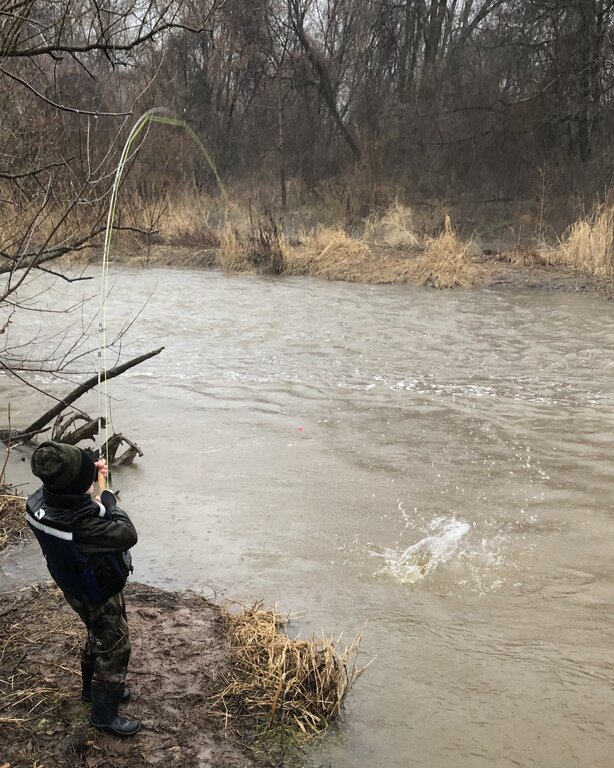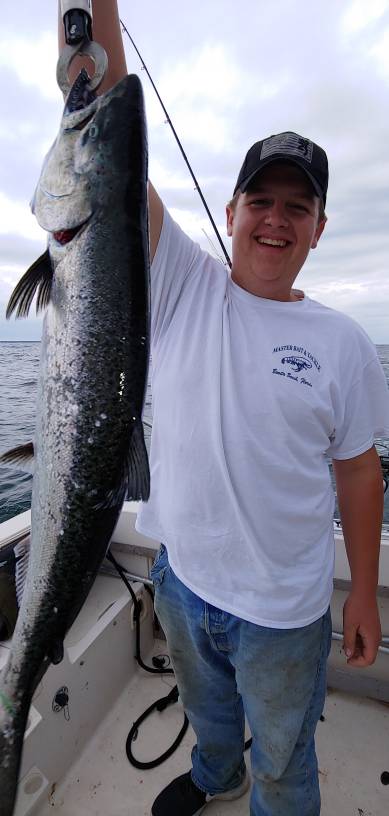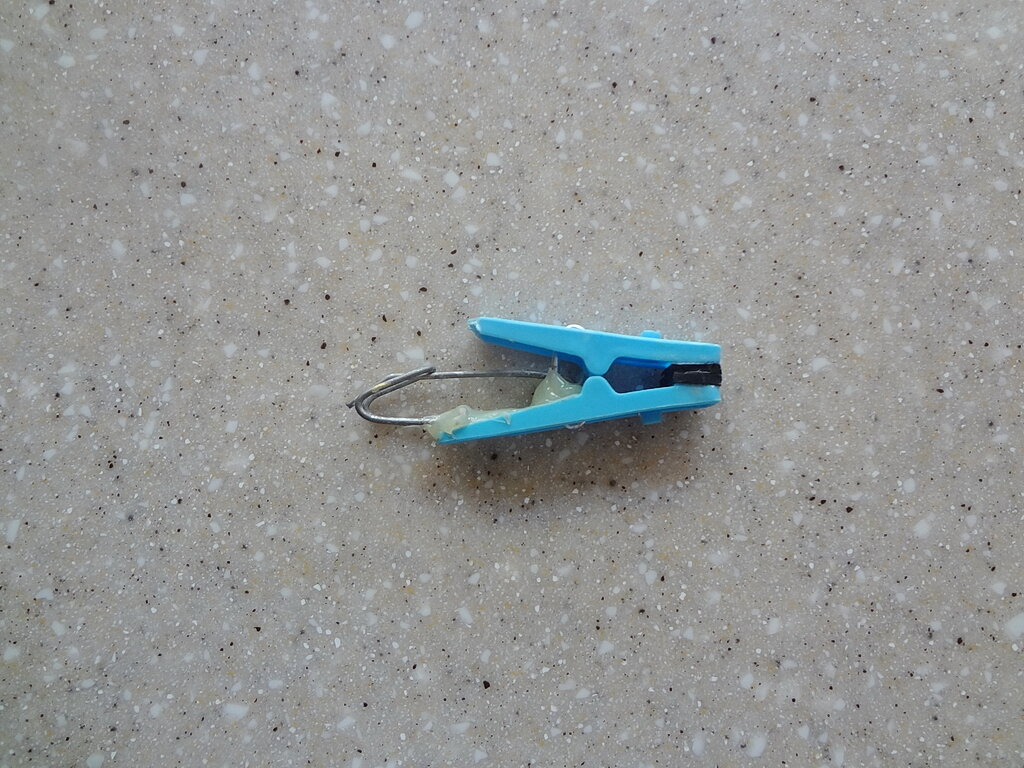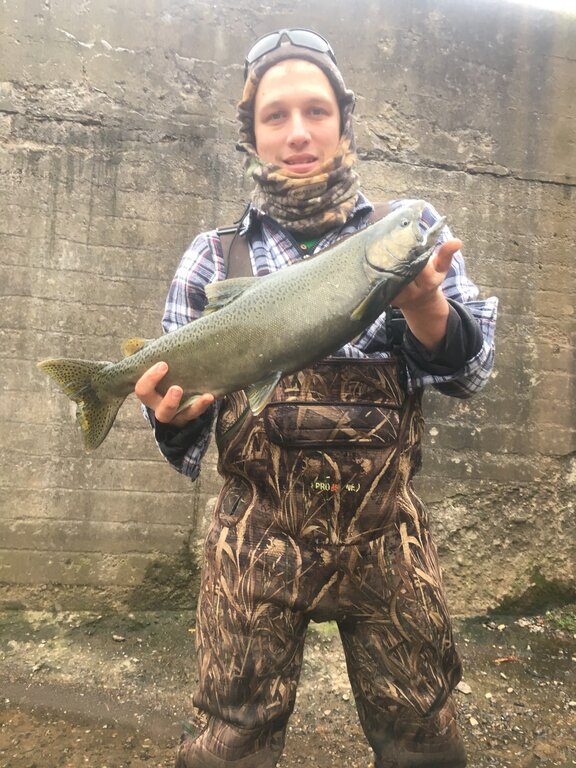

Sweet Caroline
Members-
Posts
496 -
Joined
-
Last visited
Content Type
Profiles
Forums
Events
Gallery
Store
Everything posted by Sweet Caroline
-
Lost my net today. Anybody have a recommendation? Had a extendable rubber coated net from Dicks that worked good but don’t no the make and model.
-

As the salmon move out deeper - launching question
Sweet Caroline replied to Dan M's topic in Open Lake Discussion
Braddocks was my go to spot when I trailered my boat. Can’t beat the Sandy to Braddocks area in the Summer IMO. Easy access to deep water if you head NW. Always good brown and lake trout fishing in close too. -

How to eliminate water and hone in on kings?
Sweet Caroline replied to hondo573's topic in Open Lake Discussion
Active fish that are moving fast don’t always mark well on fish finders. Sometimes you see a dot dot dot or “ghosts”, but generally solid marks are stationary or following fish. My observations are the best fisherman usually are very detail minded and will put in the extra effort. Those who change lures often, motor just a little further, tie the best knots, sharpen their hooks often, check lines often, pay attention to patterns, etc, etc tend to have better overall performance. There are always days that despite everything you are doing you just can’t make it happen. I’ve had days when boats around me hammered fish and I struggled and vice versa. Consistently catching fish can be a lot of work. There is definitely a balance of feeling like you are at work and exhausting yourself out there or just enjoying your time on the boat fishing and relaxing. As far as eliminating water is concerned some general tips are stay away from cold, clear water, move further offshore as the season progresses, and know that a NW wind brings warm water in and a NE wind brings cold water in. When searching I typically go N or S and will do a circle if I have a good screen even if I do not get bit the first time through. Maybe change up my spread and continue to circle a couple times to see if I can trigger a bite. As the saying goes, never leave fish to find fish. Sometimes the act of circling itself will get rods to fire as the lure changes direction and pulls away from a following fish. Think of shaking a toy in front of a cat. The cat will watch intently but won’t strike until the toy is pulled away. The thermocline will be set up In July so that helps eliminate a lot of warm water near the surface, usually top 50ft or so. Where you start is a matter of personal preference. In July there is an inside bite with browns and lakers in less then 150. FOW. Kings can be mixed in, especially earlier in the month or Sandy to Braddocks if you are fishing the Rochester area. Or you can start in 150 fow and go out from there looking for kings and steelhead. I prefer the later. As the month progresses the inside bite for kings can be hit or miss and I’ve found going further offshore (up to 500 FOW by the end of the month) is a better bet for finding kings. August, I’m almost always fishing 300-500 plus FOW and then back in to 100 FOW or less, temp permitting, by the end of the month (Usually Labor Day) and September fishing browns and mature salmon. When searching in the Summer, I always do a temp check in 120 fow or so before setting. I’m checking to see if the temp is too deep, 100 plus ft down, or too shallow, above 40 ft. If either of the above is true, I know stable, more productive water where the thermocline is usually 50-80 ft down has moved offshore. That water can usually be found 250-500 FOW. Not to say that fish cannot be caught in those conditions, especially when the thermocline is pushed deep. I just hate fishing 100 plus ft down and prefer to see if I can find cold water up higher so I can run a better spread. I will keep motoring out and do down temp checks along the way until I see the down temps getting better. I then set up and go North from there. Much of this is a matter of personal preference and there are better fishermen on here then me that may have a whole different take. Many times the fish have their own agenda on where they prefer to be and will throw a curve ball to the norm. For lure selection I have a morning/low light lure box (white cups/glow, etc) and a midday/high light (Silver/UV, etc) box. Normal Summer days I’m changing over around 10am to my high light stuff. Also, I never run orange/red/pink below 35 ft or so. Lures don’t stay out more then an hour if not bit. I tend to go “All in” on a color scheme once I find what’s working and will have 8-10 spoons of the popular patterns in my box. Some days I”ll have all my riggers with the same spoon with cheaters if there is a strong preference to a particular spoon. I can go on and on. The best advice I can give you is to ask a lot of questions, always observe and learn and be open to trying new techniques. I’ve been doing this 35 plus years and never thought of running more then two dipseys. Observing others around me that are successful doing it made me think, why not? There are certainly days when the dipsey bite is hot so why not capitalize on it. Hope this helps and good luck. -
Buying a new reel for slide diver. The one I have now has braid on it from 15 plus years ago. Any recommendations on what line to get?
-
I want to purchase a third dipsey rod and run two on the starboard side when conditions warrant. I upgraded all my rods to ugly sticks. I’ve been told to use a shorter rod on the inside. Ugly stick has a 7ft medium action rod that I’m thinking of using as the inside dipsey rod. Any thoughts on using that rod as an inside wire dipsey? It’s rated for 12-20lb. The normal dipsey rod is rated for 12-30lb so I’m not sure it cam handle the stress of wire and a big king. I want to pair that with a saltist 30. Any suggestions on what wire line to get as well. Trying to get everything from fishusa. Thanks in advance
-
-
Anybody know if they still barge stock any browns in Lake Ontario. Will they be doing it in 2020? The cormorants just hammer them when they are shore stocked.
-
-
https://www.glangler.com/blogs/articles/will-natural-selection-save-our-salmon-by-jim-bedford First I’ve heard of Kings eating gobies. Also reinforces that a warm Spring is best for alewife survival in that an early thermocline traps plankton earlier higher in the water column thus allowing less bottom filtration by mussels. Also, interesting about some of the adaptability in the life traits of salmon populations in certain rivers. Probably less of that in LO due to more unsuitable habitat.
-
-
Stock more browns! The current food chain can support it. Gobies eat zebra mussels, browns eat gobies. Browns offer small boaters near shore fishing opportunities year round and also can be caught in many tribs Sept-April. They are the heartiest and most adaptive of all the salmonids we have here in LO and a great game fish. They are a win-win for everybody. They also catch and release well and are homebodies. Steelhead come and go with the wind in the tribs, frequently get lock jaw, whereas browns will pretty much stay in a single stretch of a trib all winter and continue biting day after day. Same in the lake. Browns can be found near structure in less then 100 FOW any time of the year providing opportunity for all boats, big or small. They also can be caught in more off colored water which frequently happens in the tribs. I can’t tell you how many times browns have saved the day on a trib when I got there and it was “blown out” from rain or run off. Steelhead completely shut down in those conditions yet browns still remain active. Imagine being an out of towner and faced with those conditions on your trib trip. If only steelhead were available your trip would be dead. Having browns around would at least provide them an opportunity to catch a respectable game fish when nothing else will bite. I’ll also add they are also a great pier fish Spring and Fall. I had some of my young cousins sending me pictures of huge browns they were catching off of Webster pier this fall. They could care less that they weren’t catching salmon. They are a great addition to both the lake salmon fishery and trib steelhead fishery. If either fishery is slow, browns can keep rods bending. In the Fall when staging salmon fishing is slow, Lake trout fishing is considered the go to for many. When you are targeting lakers that pretty much is all you are going to catch though. Salmon can be caught right along with browns late August on in to the late fall, thus filling some of the down time. It’s my opinion that having an abundant supply of browns available will help in promoting the fishery and keep folks coming back. It’s one fish that the lake likely can support more of with little impact on our current bait population. I believe folks from the DEC frequent this site. I’m hoping this can at least be added to the lake management discussion. If it is a hatchery capacity issue then maybe find a way to increase the survival after they are stocked. One thing I know after witnessing many browns being stocked is they pretty much don’t move for days and weeks on end. Cormorants and other predators could easily decimate a pod of fresh stocked browns. I’m proud to say that I took my 6 year old trib fishing for the first time last week and we were 1 for 3 on browns in 15 mins. He was cold and wet after a short period but thank god there were browns around. my two cents
-
Gambler...Ah Sam Dattilo...he was my Great Uncle. That explains your laker catching ability:). Just out of curiosity what does have the most diverse diet? Browns, lakers, Steelhead, coho... I rarely put any fish under the knife so it would be interesting to hear from others. I’m sure it is season dependent to some extent.
-
-
Rolmops, I hear ya, but Michigan has seen a huge rebound of 35 to 40lb salmon in 2019. They estimated their wild contribution to be even higher at 60 + %. I think size will come back some once we have a better balance. Agree that stocking reductions alone won’t have as much of an impact as it did in the 90s due to natural reproduction and pen rearing. Problem with natural reproduction is it is unpredictable with boom and bust years. I think the DEC uses 50% as an average but some years it could be higher or much lower. 50% is a misleading number though when it comes to total population. 50% of 2 million is a vastly different number then 50% of 500,000. Stockinq and pen rearing artificially keeps the population consistent, but that doesn’t mean the wild population will be as consistent. In a natural environment there is usually symmetry between predator and prey abundance. When prey abundance is up, predator populations follow. My guess is that our Chinook natural reproduction is lower right now. Usually the same environmental conditions that cause a prey population to shrink, in our case cold winters, have the same affect on predator survival. Plus the YOY chinook that do hatch have less of a chance of survival because their main food source isn’t as abundant, slowing their growth rates and making them susceptible to predation themselves. To a lesser extent the same probably happens with our stock fished although they have a bit more of head start on their growth from the beginning. I’m sure there are some years though where our pen reared and stocked fish have better survival then others. The reduced stocking of lake trout though, for the most part, probably does directly impact their population over time since they do not have the reproductive success of chinook. My guess is that with all the great chinook fishing the adult lake trout population has rebounded after years of being hammered in the 90s and early 2000s. That, along with the cold winters, has likely played a role in our current alewife population. Lake trout aren’t the massive alewife eating machines that chinook are, and reductions in their stocking numbers certainly will have less of an immediate impact on current alewife predation, but over time they take their toll. We could not stock any chinook at all, totally protect our spawning population once they hit the tribs and have them naturally reproduce. We will have years of great fishing and years of poor fishing but both the predator and prey population will be in perfect balance as usually happens in a natural environment. Then again, their is nothing natural anymore about our current Lake Ontario ecosystem. Really the best solution is to have a couple warm winters that produce outstanding alewife hatch’s. At the end of the day, I will always enjoy chasing trout and salmon regardless of what happens. Some years will be better then others, but my passion will be the same. Happy Holidays
-

New Steelhead Open Lake Fishing Reg Update
Sweet Caroline replied to reelxite's topic in Open Lake Discussion
Likely our bread and butter fish, the lake trout, will take the biggest hit if salmon fishing declines. Cowbells will be flying by 9am. Even though you can C&R them better than steelhead, mortality will still be high in the Summer months. I’d imagine that any charter east of Oak Orchard looking to put clients on fish is going to save gas and opt for more of sure thing with lakers. Heck Charters do that even now if customers aren’t specific about what they want to catch. The upside to this is predation on alewives from lakers will be significantly reduced. Likely having as much or of an impact on increasing alewife abundance as the reduced salmon stocking. The impact will be long lasting as well since lake trout are long lived. With pen rearing in full effect and the natural reproduction we have nowadays, I’m not so sure the reduced stocking will have as much of an impact on salmon fishing as it did in the 90s. Sure, 20 + fish mornings will not be as common, and likely salmon fishing will be best in the Spring west and to the east in the Fall like it has in the past. I remember struggling to catch 2 or 3 salmon in the 90s. I don’t think it will get that bad...maybe. Other difference is, with the advent of the cowbell, I suspect the laker population will get hit heavily and fast. Difference between then and now is just about everybody knows how to fish lakers now. The use of cowbells as a laker fishing technique was not well known until the late 90s. Once it caught on, after a few years of heavy lake trout fishing along with the already reduced salmon stocking the alewife population bounced back and salmon stocking was increased. I really don’t think reduced limits or size restrictions will have much of an impact on trib fishing. As many other folks have mentioned I have a heck of a time getting lake caught steelhead to survive, especially once surface temps hit 68 plus. Since I prefer to catch steelhead in the streams and hardly ever keep fish in the lake, I truly would be in favor of reductions if I thought it would help. From a purely humane perspective I think it is a shame to release any fish that will not survive if somebody is willing to eat it. As others mentioned it is difficult to avoid catching steelhead while salmon fishing in the summer as they are found in many of the same water as salmon after June. Possibly April through June a creel reduction would make sense because steelhead somewhat can be targeted on surface and have a better chance of being released. I peaked in my trib steelhead fishing in the mid 90’s to about 2013, when my first son was born. I fished the tribs 2-4 times a week October-March. My logs all show that my best years were late 90s to about 2004-2005. I think the biggest impact of steelhead fishing in the tribs is the fishing pressure they get regardless of how many fish are in the system. For example, I remember taking days off from work when the the Genny blew out and then came back to that “perfect green” color. Easily 20-30 plus fish could be caught the first couple of days. By day 3, 10-15, and after that people struggled. Having more fish in the system wont stop the gluttony that happened the first few days and fishing will still be slow after that. It’s not that these fish die, it is they stop biting after being caught a couple times. The only solution would be to get folks to stop fishing after catching 5 or 10 fish, instead of continuing to catch 10 or 20 more. That is just not going to happen. Same scenarios at the Oak and Sandy. Thinking back, the reason why my fishing was best in the 90s through early 2000s was the use of center pins had not come in to full effect. I was a early adopter. Once everybody started using them, just like the effect cowbells had in the laker fishing, the pressure on these fish once in the tribs tripled. Again, this regulation has zero impact on me, but I thought I’d share an outside perspective. -

DEC Announces Lake Ontario Fisheries Public Meetings
Sweet Caroline replied to L&M's topic in Open Lake Discussion
Don’t want to seem all doom and gloom but with the late Spring that we had and now early Winter it is highly likely the 2019 alewife hatch is going to be dismal as well. Was hoping for a warm Fall to allow a little more growth opportunity for them but that didn’t happen. A late Spring followed by a early Winter is worst case scenario for YOY alewife survival. Why even put a limit on Salmon in the lake? If people want to keep salmon, let them. Favorable environmental natural hatch or stocking conditions in any given year will outweigh any reduction in stocking anyway. Also, with alewife populations down, native bait populations will see a rebound. Maybe stock a few more Browns, steelhead, coho, that will feed on other sources of bait. Kings will die before they change their eating habits while other species will adapt. My two cents -

Regulation change to steelhead limit on Lake Ontario
Sweet Caroline replied to reelxite's topic in Open Lake Discussion
Good read. Being both a trib and lake guy I get both sides. My thoughts: 1. Avid trib steelhead/trout fisherman generally are catch and release from what I’ve seen. Having more fish in the trib system to catch would generate and keep more interest than being able to harvest more fish. 2. Stream fish are more likely to be released successfully than lake caught fish. They are also more likely to be caught and enjoyed multiple times once they are in the Tribs. 3. Once water temps reach the high sixties and above the mortality of lake caught fish of all species increases. Having a one steelhead limit lakewide Oct through June and then increasing the limit in July, August, Sept might be a better solution. We were catching Steelies while offshore in August and early Sept this year and remember commenting on how fragile they are. Barely touched or took them out of the water and they still went belly up. Would be a shame to let them go and have them go belly up if folks wanted to eat them. The extent it takes to revive them in these conditions is just not feasible for many. I personally don’t feel comfortable hanging over the side of my boat reviving fish for an extended period. 4. IMO Natural reproduction is much more of a factor in the lakes salmon population in a given year then stocking. In a good year of natural reproduction you probably could still have excellent lake salmon fishing even with no stocking, minus the 2-3 week Sept staging at tribs with no natural reproduction. Higher lake creel limits of salmon is probably the best solution to try and curve a high predator to prey relation, given that any reduction in stocking could easily be countered by high natural reproduction in a given year. 5. Brown trout are a 12 month year fishery and a much more accessible, hardier and well rounded fish then both steelhead and salmon. Many times I have caught more Browns then steelhead Jan-April in our western tribs. They also are not as alewife dependent as salmon and steelhead, available to shore and small boat fisherman year round, have an abundance off prey in the form of gobies, can be caught and released successfully, etc,etc. I had some of my young nephews sending me pictures of browns they were catching of the piers in sept this year and they were totally stoked. Not even a mention that they weren’t catching salmon. 6. Went to the salmon river fish hatchery 3rd week of August this year and the raceways were packed. Questions: 1. Has there ever been any studies of how many steelhead return to the tribs more then once (two salt fish). 2. Why did the thaimine deficiency suddenly become an issue in 2014 after all these years of steelhead eating mostly alewife. 3. Do most charter clients want to keep a ton of fish? I’m not a charter but take newbies out regularly and rarely do they want to keep a lot fish. Maybe a real large one for pictures or a small one to eat, but seldom more than 2 fish. Wondering if things like going from a 4 or 5 fish limit to a 2 or 3 fish limit really has all that much of an impact on returning clients. I would think catching larger fish or catching a large quantity of fish would trump being able to keep a lot of fish as far as clients returning is concerned. -
As disclaimer I’m not a biologist or fisheries manager nor a licensed captain. I took some fisheries classes in college as electives and my memories of salmon fishing in Lake Ontario go back some 35 years. During my peak I likely fished the tribs and lake combined 100 + days a year for many years. In the past five years I haven’t trib fished at all and get out in the lake 25 or so times during the April-Sept season. Ok, now that I have said my disclaimer here are my thoughts/theories: Returns & Staging Salmon: 1. Worse than normal returns this year likely due to poor pen conditions in 2016 as Gambler stated. That said, staging salmon fishing on the west end has been declining for many years. I pier fished 5 solid years in the mid-late 90s and never recall landing more than 2 or 3 fish in hours of fishing. Piers were lined up some nights but nobody was going home with their limit. My guess is it is even worse now. If you are comparing returns to the peak in the 80s there simply are far less salmon stocked today than there was then. 2. In tribs where returns are solely sustained with stocking, staging and upstream migrations are delayed 3-4 weeks later than when salmon were first stocked in the 70s and 80s. My earliest memories are fishing for staging salmon around the Genny in 30-40 fow as early as mid August with combat fishing peaking Labor Day to mid September. By mid 90s it was mid to late Sept. No idea what it is now because after Labor Day I switch to trout fishing for browns fishing away from major tribs or Steelie fishing offshore and still usually catch matures in the mix not even targeting them. My guess is that the reason for later returns is early returning fish have been selected out because they went belly up before making it to the hatchery. Many probably remember all the floaters in the western tribs years back in Sept. Many of those fish that ran early never made it full cycle. 3. Natural reproduction seems to be more of a factor these days as our salmon have evolved to our conditions. I have worked in the Fishers/Victor area for many years and regularly walk the banks of Irondequoit creek in the fall. In the upper portions of the stream where I believe natural reproduction occurs, the heaviest concentrations of bedded up spawning salmon does not occur until after Nov 1st all the way to Thanksgiving. These fishing likely didn’t even begin staging until late Sept and first entered the actual stream well in to Oct. 4. Back to this year. Constant changing winds likely have scattered stagers causing fish too trickle in rather than stage in any great numbers. Daily reports from the DSR on the salmon river haven’t reported any major run, yet the river is full of salmon top to bottom. A good morning run in the DSR this year has been less than a couple hundred fish when usually there has been at least one major run by now of hundreds and hundreds of fish in a morning. Could still be coming I guess but my theory is that with constantly changing lake conditions fish don’t stage in great numbers as when conditions are stable. As a side note, there are reports of tons of Coho this year in the Salmon river. Where the heck were they in the lake all year! 5. In reality pen rearing is only extending the season another 2-3 weeks and at a time of year when salmon are least desirable. I had good fishing for matures right through Labor Day this year and the past few years and then usually switch to trout tactics as I mentioned. Likely the matures I’m catching offshore still around Labor Day are late migrating east end returns. This is coming from a purely recreational standpoint and I understand the concern of those that are in this for business. That said I would much rather have the fantastic spring and summer fishing experienced on the west end when kings are in their prime then the combat fishing on the east end for declining salmon. In years past we accepted that if you want good salmon fishing in early spring you had to move west and many charters did, still do. We may have to accept that is you want good fishing for salmon at the end of the season you have to move east, but it seems far less captains are willing to do that. 6. My guess is there will still be a ton of salmon at the lower falls in a month. Every year I go down there and it is still absolutely amazing at the numbers of fish. Fish simply don’t seem to stage like they used to. Same with Oak. Not sure about Burt or further west. Other Observations: 1. Vince likely is seeing loads of bait as he is in some of the most productive waters of the whole lake. As long as there are alewife in the lake that will inhabit the Niagara shoreline. Same with the Sandy guys. The structure and currents between Devils Nose and Braddocks will always hold bait, regardless of what is going on in the rest of the lake. I can’t say fishing out of I-Bay that I have seen any noticeable amounts of bait the past couple years. 2. Salmon seem to be more spread out all season starting in the Spring. I fished the Niagara region for 20 years in May but the last year few years I’ve saved the time and gas and do just as well out of Rochester then when I fished Niagara. I’m sure the fishing is still phenomenal down there but haven’t felt the need to make the trip with all the good fishing here. I recall good salmon fishing east near Sodus and Oswego not occurring until July or so back in the day. Now they are getting them in decent numbers throughout the entire season. 3. I believe the bait population is lower then what is used to be which is causing a reduced size in our salmon but better catch rates. Too much of a correlation with what is happening/happened in Lake Michigan. For awhile catch rates skyrocketed but salmon size was way down. Bait analysis showed a declining abundance much like ours does now. A few years ago they drastically reduced stocking numbers and salmon size shot right back up as they are regularly catching fish 30 to almost 40lbs the last couple of years. I believe the catch rates have decreased though. Not saying we need to drastically reduce stocking like Michigan, but if we want to maintain a trophy fishery with the 30lb plus potential we have to be mindful of the bait trawl data and stocking numbers. My two cents
-
Fished slightly east of Irondequoit. Bite started in 250 fow and got better as went out. Made it out to 400 fow. Various spin docs on wire and copper produced and had a few bites on meat down 105. No matures though although we did have a couple rips that seemed like big fish and I know a couple boats scored a mature or two out there but nothing like last week.
-
-
Because of high summer water temps most LO tribs rule out any salmonids natural reproduction that’s YOY have to spend at least one summer in the tribs. You likely will not see any significant natural reproduction of Steelhead, Atlantic’s, Coho in LO because once trib temps increase above 60 or so degrees there is almost 100 % mortality of the juveniles in the tribs. Chinooks yoy on the other hand migrate out before lethal trib temps become a problem and are best suited for LO natural reproduction. My guess is that Chinook naturally reproduce in more LO tribs then many think.
-

IBAY 8/24 and 8/25
Sweet Caroline replied to leadhead's topic in New York Fishing Reports - Lake Ontario (South Shore)
-
I’m for status quo until we have a couple years in a row of decent alewife production. The few times I’ve ventured past 400 fow this year I’ve caught both 1 and 2 year old salmon. There seems to be a good crop to support the next couple of years. Given the cool Spring we had this year and the delayed spawn we are at a real risk of having another year of poor production with the 2019 alewife. A cold winter or even a normal winter could be devastating to this years alewife crop as the fish likely will be younger and smaller than normal going in to this winter. I see less risk in stocking a few less salmon possibly that the lake can sustain than stocking more. Worst case if there is miscalculation and we stock too less, instead of catching 10-20 salmon in a morning we catch 5-10 with a real chance at a 30 plus lb fish. It is also is likely that stocking less salmon won’t have a negative impact on catch rates at all if the bait population is lower. If salmon fishing is slow, lake trout will take a beating which will also have a positive impact on alewife. You would have a hard time convincing me that any increase in stocking right now is justifiable. My two cents
-

Lake Michigan Giant kings this year!!!
Sweet Caroline replied to Inthebox30lbs's topic in Open Lake Discussion
Been told that 90% of the cormorant diet is gobies. Abundant and easy for them to catch -

Lake Michigan Giant kings this year!!!
Sweet Caroline replied to Inthebox30lbs's topic in Open Lake Discussion
I’ll be an armchair quarterback here, but couldn’t the DEC use a “follow the hatch” stocking strategy? When Spring trawls indicate a good alewife production, stock more kings the following Spring. When production is down, stock less. Life cycles of each species run fairly parallel. When the alewife are at maturity so would the kings. Of course, natural reproduction throws a twist in that approach but it is better then stocking the same amount regardless of prey availability. I suppose that is kind of what they are doing now with the recent stocking reductions to a certain extent so I give them credit for that. In a lot of these threads I read a lot of opinions, subjective numbers, and speculation being treated as fact. “My fishfinder shows this”, “ my buddies are telling me that”, “ I’ve caught less of this or more of that” “the reason is because of this”. We can argue back and forth about Lake Michigan catch rates, but what does the creel data suggest? We can come up with theories about what is causing lower weights in salmon or maturity at different ages, but what is the objective data telling us? Is the data telling us that Lake Michigan salmon are indeed maturing later than Lake Ontario? If it is true that abundance of bait causes salmon to mature early, then when the lake was polluted with alewife in the 80’s wouldn’t the majority of mature salmon be 2 years then as well. I don’t think the data would suggest that which contradicts the idea that our salmon are maturing early because of more bait. Nobody can dispute that there were tons more bait in the 80s, early 90s and the majority of mature salmon were 3 year olds, not 2. I’ve read studies that say the opposite regarding maturity. When conditions are unfavorable, such as insufficient food source, individuals reproduce at an earlier age and smaller size to keep the gene pool going. It is too much of a coincidence that as Lake Michigan reduced salmon stocking the size of their salmon increased. There is some merit to what Captain Vince is saying about “watching what you wish for” and the larger size correlation to low catch rates. Are you willing to sacrifice lower catches for larger salmon? But why reinvent the wheel when we already have a test tube with Lake Michigan. What does their objective data show when they lowered stocking rates? How much did the creel increase/decrease, how did it affect the average size and age class? All information that should be available and taken into consideration for our Lake Ontario management. In a perfect world if there was always a perfect balance of predator/prey then size and catch rates would remain unchanged. The DEC certainly has their job cut out for them in trying to maintain that balance and I give them kudos for their efforts. My two cents








